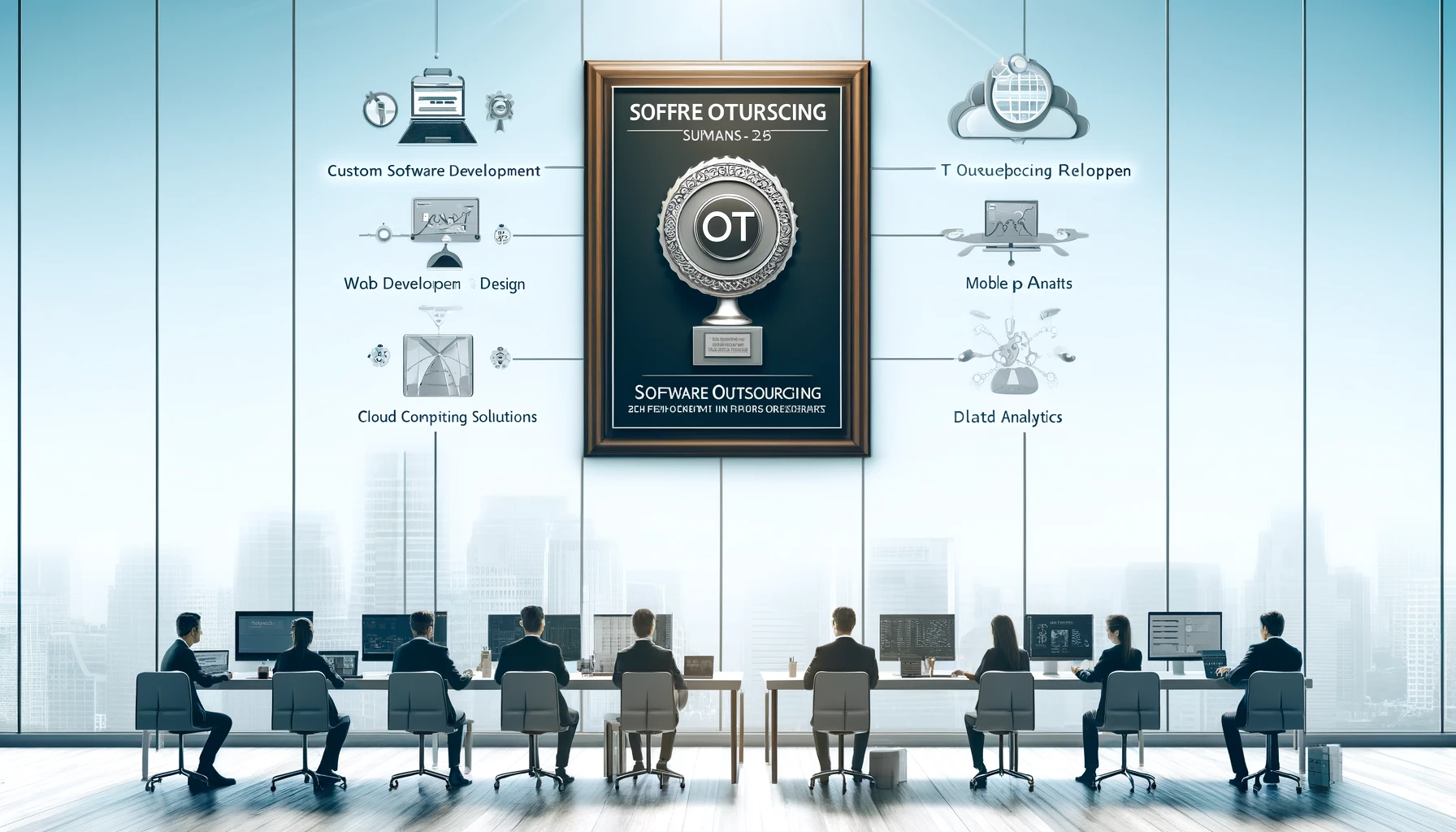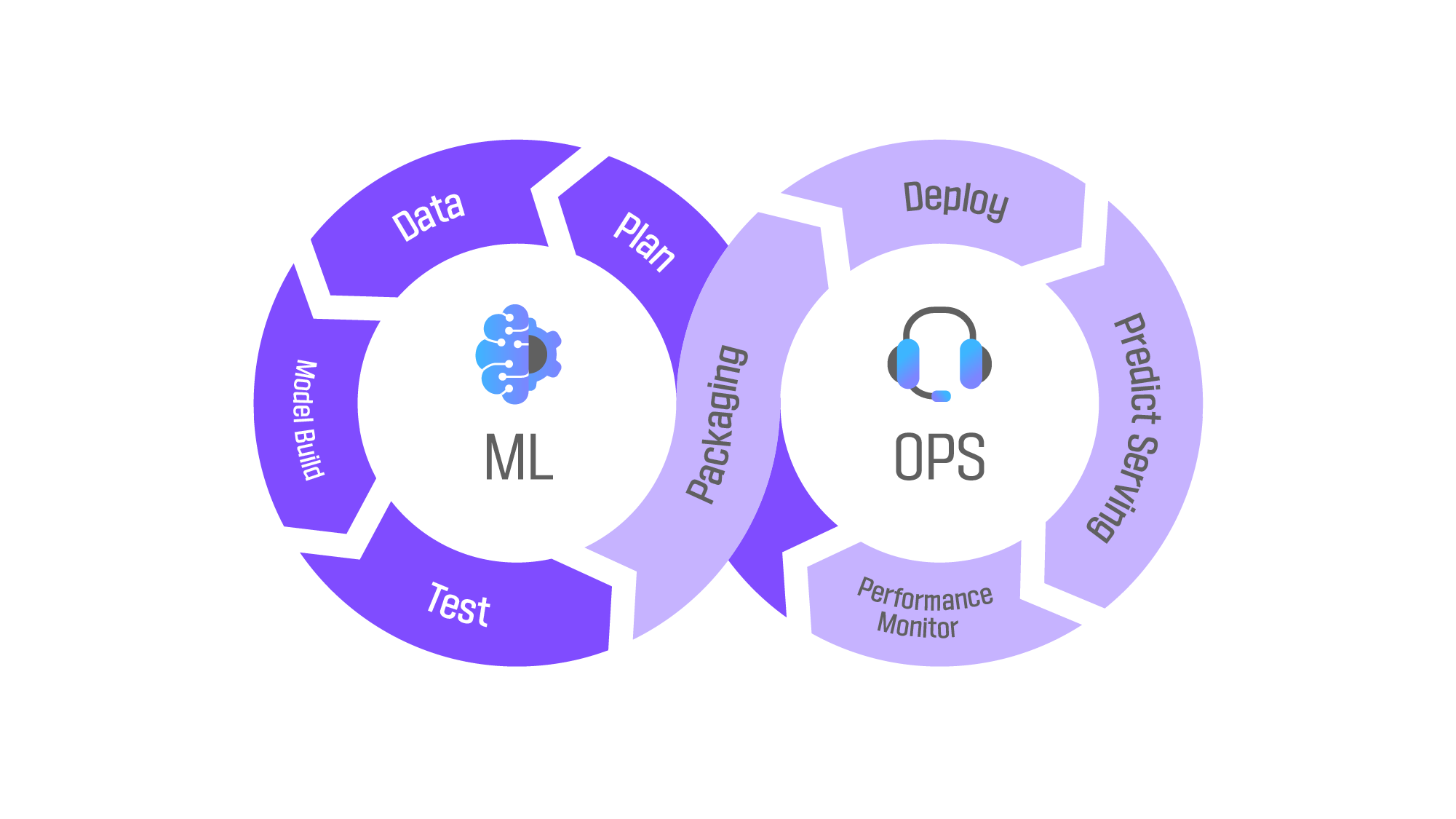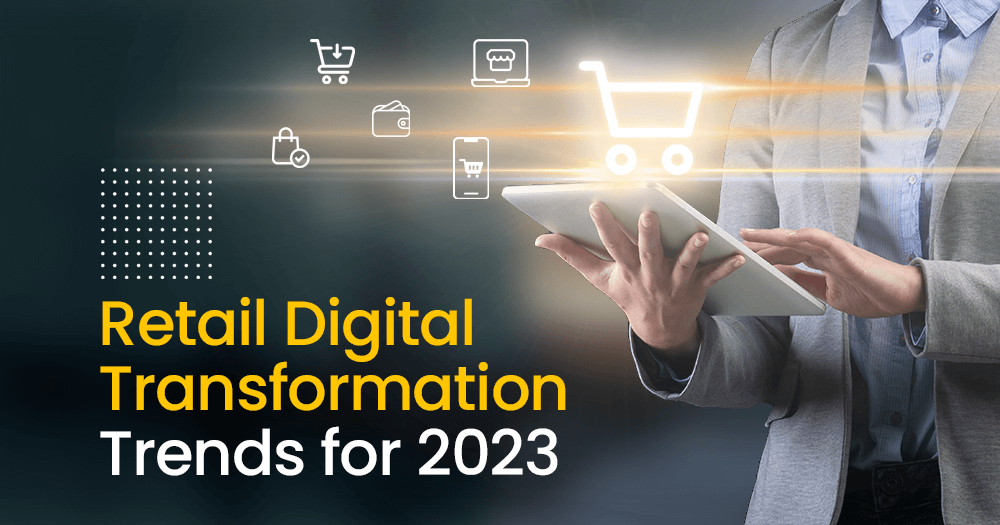Retail digital transformation refers to the strategic integration of technology into retail operations with the goal of improving efficiency, customer experience, and growth. It encompasses a range of activities such as contactless ordering, curbside pickup, self-checkout systems, cost optimization, and AI-powered product recommendations.
In today’s retail landscape, digital transformation has become a necessity for staying competitive and meeting consumer expectations. As per recent research by Gartner, the trend towards online shopping will continue to accelerate, with more than 50% of all consumer spending projected to be done online by 2023. Moreover, nearly 60% of online transactions will be carried out on mobile devices, emphasizing the need for retailers to optimize their digital capabilities. Thus, embracing digital transformation is critical for retail leaders to remain relevant and sustain growth in the coming years.
What’s Driving the Demand for Digital Transformation in Retail?
The global retail industry, which employs 1.8 billion people, represents a $7 trillion market with approximately 3.2 billion consumers shopping online. In the past, retailers focused primarily on competitive pricing, store proximity, convenience, and product variety to drive value and loyalty among customers. However, in today’s digital age, personalization in communication and marketing strategies is critical for retaining existing customers and attracting new ones.
By leveraging data and insights, retailers can increase the frequency of purchases by existing customers and target high-value customers who typically shop at traditional retailers. Consequently, the demand for digital transformation in the retail industry has intensified as it has the potential to directly drive revenue and growth for retailers.
Challenges in the Digital Transformation of the Retail Industry
Digital transformation in the retail industry presents several challenges that need to be overcome to reap the benefits fully. Some of these challenges are:
-
Resistance to change Retailers who are accustomed to traditional methods of managing their business may find it challenging to switch to a new system. This can create resistance to the adoption of digital methods, resulting in slow or incomplete digital transformation.
-
Cost considerations Digitally transforming a retail company can be a costly endeavor, requiring significant investments in both technology and human resources to implement an efficient management system. Small and medium-sized retailers often face budget constraints that hinder their ability to undertake a complete digital transformation.
-
Technological complexity The implementation of advanced technologies such as blockchain, the internet of things, and augmented reality can be complex. The intricate details, analysis, steps, and procedures involved in digitizing a retail system can be confusing, and those without expertise or experience in the field may find it challenging to navigate through a digitized retail system.
Benefits of Digital Transformation in the Retail Industry
Digital transformation in the retail industry can offer several significant benefits, including increased customer retention. By leveraging data and insights, retailers can segment their customers, analyze their buying behavior, and develop personalized communications and promotions to improve customer loyalty. For example, a fitness enthusiast who regularly purchases health supplements from a retailer can be targeted with personalized promotional campaigns to increase purchase frequency and retention. A notable example of this is Target, the 7th largest retailer in the United States, which has digitally transformed its retail experience using sophisticated technologies such as artificial intelligence, machine learning, and predictive analytics to identify the needs of their customers based on their past store purchases. This approach has led to improved customer experience and enabled mass personalization for businesses, resulting in increased customer retention.
Digital transformation has several benefits in the retail industry, including providing useful market insights, implementing efficient marketing campaigns, easier inventory management, and improved customer service. By utilizing consumer data analysis, retailers can generate helpful market insights that outline specific actions and strategies to increase growth and profitability, and better understand their customers. Implementing technologies such as CRM, data analytics, and marketing automation allows retailers to create personalized and targeted marketing campaigns and identify patterns and trends. Using digital technologies also streamlines and automates inventory processes, increasing operational efficiency and enabling quick order fulfillment, warehouse management, and safety stock management. Digital transformation also allows for an omnichannel customer experience, where customers can receive help and support across multiple channels, including self-service options on chatbots, resulting in round-the-clock personalized customer service while minimizing interactions and reducing costs for retailers.
Digital Transformation Trends in Retail
The retail industry has seen significant digital transformation trends that are expected to continue in 2023. Here are some of the most prominent trends:
-
Big data Retailers are increasingly leveraging big data to understand their customers better and provide personalized and efficient shopping experiences. Predictive and prescriptive analytics help manage inventory, merchandising, and procurement strategies, leading to better return on investment.
-
Omnichannel Omnichannel retailing is gaining popularity among customers who expect a seamless shopping experience across different channels. Retailers are synchronizing business transactions with customers via social media, emails, websites, and other channels. Home Depot, for example, has created personalized shopping experiences through click-and-collect and personalized marketing.
-
Internet of Things (IoT) IoT technology, such as GPS and RFID, has revolutionized how retailers track products in the supply chain. Retailers also use geofencing to control shoplifting, which costs them millions of dollars daily.
-
Blockchain Blockchain technology is gaining traction in retail due to its enhanced security, efficiency, and transparency. It helps track products in the supply chain and stores information in a decentralized ledger. Nestle, for example, has been using blockchain to track its products and expanded its use to its Swedish coffee brand Zoegas.
-
Augmented Reality (AR) Augmented reality creates unique digital experiences, enabling brands to enrich interactions with their customers. Virtual simulations help users interact better with products from their homes, while virtual stores combine traditional retail experiences with e-commerce.
Conclusion
In today’s market, where online shopping and other e-commerce options are gaining popularity, digital transformation has become a crucial factor for retailers who want to remain competitive. Failure to adopt technology and data-driven strategies could lead to being outcompeted by more innovative businesses. Therefore, retailers must stay informed about current trends and technologies to set themselves up for success and growth. By staying updated and investing in digital transformation, retailers can remain relevant and competitive in the ever-evolving retail industry.

We are delighted to announce that Slitigenz has been recognized as the top IT outsourcing firm by the esteemed SoftwareOutsourcing…

2022 sparked the AI revolution, 2023 saw it infiltrate the business world, and now, in 2024, we’re at the brink…

Hey there! Ever wondered what the buzz around MLOps is all about? Let’s break it down! MLOps, short for Machine…

Whisper represents a cutting-edge neural network model meticulously crafted by OpenAI, designed to adeptly tackle the complexities of speech-to-text conversions.…


2 Comments
Your comment is awaiting moderation.
You’re so interesting! I don’t suppose I’ve truly read something like this before. So nice to discover someone with some original thoughts on this subject matter. Seriously.. thanks for starting this up. This website is something that is required on the web, someone with a bit of originality.
Your comment is awaiting moderation.
Hi, I do believe this is a great web site. I stumbledupon it 😉 I will revisit yet again since i have saved as a favorite it. Money and freedom is the best way to change, may you be rich and continue to help others.
Your comment is awaiting moderation.
Very good info. Lucky me I came across your website by chance (stumbleupon). I have book marked it for later!
Your comment is awaiting moderation.
Hi there, I believe your website might be having browser compatibility problems. When I look at your web site in Safari, it looks fine however when opening in IE, it’s got some overlapping issues. I simply wanted to provide you with a quick heads up! Aside from that, great website!
Your comment is awaiting moderation.
п»їpaxlovid: paxlovid price – paxlovid for sale
Your comment is awaiting moderation.
can i purchase generic clomid pill: generic clomid for sale – order clomid price
Your comment is awaiting moderation.
I’m impressed, I have to admit. Seldom do I encounter a blog that’s both educative and interesting, and let me tell you, you have hit the nail on the head. The problem is an issue that too few people are speaking intelligently about. Now i’m very happy I found this in my hunt for something regarding this.
Your comment is awaiting moderation.
can you buy amoxicillin over the counter canada: amoxicillin without prescription – buy amoxicillin online mexico
Your comment is awaiting moderation.
doxycycline 100mg capsules price in india: cost of doxycycline – how to buy doxycycline without a prescription
Your comment is awaiting moderation.
https://amoxildelivery.pro/# amoxicillin 500 mg for sale
Your comment is awaiting moderation.
purchase cipro: ciprofloxacin 500mg buy online – ciprofloxacin order online
https://clomiddelivery.pro/# where to get clomid without rx
Your comment is awaiting moderation.
https://amoxildelivery.pro/# purchase amoxicillin online without prescription
Your comment is awaiting moderation.
http://paxloviddelivery.pro/# paxlovid pharmacy
cipro for sale ciprofloxacin cipro online no prescription in the usa
Your comment is awaiting moderation.
п»їpaxlovid: Paxlovid over the counter – paxlovid india
Your comment is awaiting moderation.
paxlovid pill: paxlovid india – п»їpaxlovid
https://amoxildelivery.pro/# how to buy amoxycillin
Your comment is awaiting moderation.
https://doxycyclinedelivery.pro/# doxycycline generic brand
order cheap clomid without a prescription where can i buy generic clomid without dr prescription can i order generic clomid for sale
Your comment is awaiting moderation.
Having read this I thought it was really enlightening. I appreciate you finding the time and energy to put this short article together. I once again find myself spending a significant amount of time both reading and commenting. But so what, it was still worthwhile!
Your comment is awaiting moderation.
paxlovid cost without insurance: paxlovid covid – Paxlovid over the counter
Your comment is awaiting moderation.
http://amoxildelivery.pro/# amoxicillin 250 mg capsule
Your comment is awaiting moderation.
ciprofloxacin 500 mg tablet price: cipro ciprofloxacin – cipro ciprofloxacin
https://clomiddelivery.pro/# can i get generic clomid without prescription
Your comment is awaiting moderation.
http://ciprodelivery.pro/# where can i buy cipro online
Your comment is awaiting moderation.
Oh my goodness! Amazing article dude! Thank you, However I am experiencing difficulties with your RSS. I don’t understand why I am unable to join it. Is there anybody getting the same RSS problems? Anybody who knows the answer can you kindly respond? Thanx.
Your comment is awaiting moderation.
buying generic clomid: order cheap clomid without prescription – cost of cheap clomid no prescription
http://clomiddelivery.pro/# can i buy generic clomid without rx
Your comment is awaiting moderation.
http://amoxildelivery.pro/# where to buy amoxicillin over the counter
doxycycline canada buy generic doxycycline generic for doxycycline
Your comment is awaiting moderation.
http://clomiddelivery.pro/# cost generic clomid pill
can you buy cheap clomid can i order generic clomid without a prescription cost generic clomid pills
Your comment is awaiting moderation.
Hi! I could have sworn I’ve been to your blog before but after browsing through some of the posts I realized it’s new to me. Anyways, I’m certainly delighted I discovered it and I’ll be bookmarking it and checking back regularly!
Your comment is awaiting moderation.
http://amoxildelivery.pro/# amoxicillin 500 capsule
Your comment is awaiting moderation.
doxycycline 100mg online pharmacy: cheapest 40 mg doxycycline – doxycycline 100mg tablet price in india
Your comment is awaiting moderation.
http://amoxildelivery.pro/# antibiotic amoxicillin
Your comment is awaiting moderation.
buy cipro: cipro ciprofloxacin – ciprofloxacin 500mg buy online
https://clomiddelivery.pro/# where can i buy generic clomid
amoxicillin 500 mg capsule amoxicillin 500mg capsules where to buy amoxicillin 500mg
Your comment is awaiting moderation.
order cheap clomid: where can i get clomid prices – cost of clomid without insurance
Your comment is awaiting moderation.
I blog often and I genuinely thank you for your content. The article has really peaked my interest. I am going to book mark your website and keep checking for new information about once per week. I opted in for your RSS feed as well.
Your comment is awaiting moderation.
doxycycline online no prescription: doxycycline 100 capsules – doxycycline hyclate 100 mg capsules
https://doxycyclinedelivery.pro/# how to buy doxycycline in uk
paxlovid cost without insurance paxlovid price paxlovid pill
Your comment is awaiting moderation.
https://doxycyclinedelivery.pro/# cost of doxycycline tablets
Your comment is awaiting moderation.
п»їcipro generic: cipro 500mg best prices – ciprofloxacin generic price
http://doxycyclinedelivery.pro/# doxycycline 100 mg tablet
Your comment is awaiting moderation.
http://clomiddelivery.pro/# where can i buy cheap clomid
doxycycline 40 mg generic cost doxycycline 20 mg tablets where can i get doxycycline online
Your comment is awaiting moderation.
I seriously love your website.. Excellent colors & theme. Did you create this website yourself? Please reply back as I’m planning to create my very own website and want to find out where you got this from or what the theme is called. Thank you.
Your comment is awaiting moderation.
https://ciprodelivery.pro/# purchase cipro
doxycycline 100mg for sale doxycycline order online doxycycline 100mg tablet brand name
Your comment is awaiting moderation.
https://paxloviddelivery.pro/# paxlovid price
Your comment is awaiting moderation.
can you buy cheap clomid without insurance: get clomid no prescription – cost of cheap clomid without a prescription
http://clomiddelivery.pro/# can i get clomid pill
Your comment is awaiting moderation.
paxlovid for sale: paxlovid pharmacy – paxlovid pill
http://amoxildelivery.pro/# amoxicillin 500mg capsules uk
buy paxlovid online paxlovid covid Paxlovid buy online
Your comment is awaiting moderation.
Excellent blog post. I absolutely appreciate this website. Continue the good work!
Your comment is awaiting moderation.
amoxicillin 500 mg cost: amoxicillin order online no prescription – ampicillin amoxicillin
Your comment is awaiting moderation.
http://paxloviddelivery.pro/# buy paxlovid online
Your comment is awaiting moderation.
medicine amoxicillin 500mg: where to buy amoxicillin pharmacy – where to buy amoxicillin pharmacy
https://doxycyclinedelivery.pro/# doxycycline 100 mg coupon
paxlovid cost without insurance paxlovid pharmacy paxlovid covid
Your comment is awaiting moderation.
paxlovid cost without insurance: Paxlovid buy online – paxlovid generic
Your comment is awaiting moderation.
where can i buy generic clomid pills: how to get generic clomid no prescription – cost of generic clomid pill
http://doxycyclinedelivery.pro/# doxycycline pills buy
Your comment is awaiting moderation.
http://amoxildelivery.pro/# amoxicillin buy no prescription
Your comment is awaiting moderation.
http://amoxildelivery.pro/# amoxicillin without a prescription
can you buy amoxicillin over the counter canada amoxicillin 200 mg tablet how to buy amoxycillin
Your comment is awaiting moderation.
https://amoxildelivery.pro/# amoxicillin medicine
cost of clomid online can you get cheap clomid online can i order cheap clomid no prescription
Your comment is awaiting moderation.
doxycycline cost united states: doxycycline 100mg price 1mg – doxycycline order canada
https://doxycyclinedelivery.pro/# doxycycline cheap uk
Your comment is awaiting moderation.
rexall pharmacy amoxicillin 500mg: can i purchase amoxicillin online – amoxacillian without a percription
https://doxycyclinedelivery.pro/# doxycycline cost
doxycycline 150 mg cost comparison doxycline doxycycline 100mg tablets
Your comment is awaiting moderation.
https://doxycyclinedelivery.pro/# doxycycline 600 mg
Your comment is awaiting moderation.
I truly love your site.. Great colors & theme. Did you build this site yourself? Please reply back as I’m hoping to create my own blog and would like to learn where you got this from or exactly what the theme is named. Thanks.
Your comment is awaiting moderation.
doxycycline 100mg tablet price: price of doxycycline – doxycycline cheap australia
http://clomiddelivery.pro/# cost of cheap clomid
amoxicillin 500 mg purchase without prescription amoxicillin from canada cost of amoxicillin
Your comment is awaiting moderation.
https://paxloviddelivery.pro/# paxlovid generic
Your comment is awaiting moderation.
Aw, this was a really nice post. Taking the time and actual effort to create a really good article… but what can I say… I hesitate a lot and don’t manage to get anything done.
Your comment is awaiting moderation.
buy paxlovid online: paxlovid pill – paxlovid for sale
https://clomiddelivery.pro/# where to buy cheap clomid without rx
Your comment is awaiting moderation.
Very good post. I am going through many of these issues as well..
Your comment is awaiting moderation.
Pretty! This was an incredibly wonderful post. Thanks for providing this information.
Your comment is awaiting moderation.
Everyone loves it when people come together and share ideas. Great blog, keep it up.
Your comment is awaiting moderation.
http://ciprodelivery.pro/# ciprofloxacin order online
Paxlovid buy online paxlovid india paxlovid generic
Your comment is awaiting moderation.
Hi there! I could have sworn I’ve been to your blog before but after going through many of the articles I realized it’s new to me. Regardless, I’m definitely delighted I found it and I’ll be book-marking it and checking back frequently.
Your comment is awaiting moderation.
amoxicillin 500mg prescription: amoxicillin 500 – cost of amoxicillin 875 mg
Your comment is awaiting moderation.
Good article. I’m dealing with some of these issues as well..
Your comment is awaiting moderation.
https://paxloviddelivery.pro/# paxlovid buy
average cost for doxycycline doxycycline 20 mg india doxycycline tablets 100mg
Your comment is awaiting moderation.
can you buy cheap clomid for sale: buying cheap clomid no prescription – can i order cheap clomid pills
Your comment is awaiting moderation.
https://amoxildelivery.pro/# amoxicillin 500mg capsule buy online
Your comment is awaiting moderation.
doxycycline over the counter usa: doxycycline generic pharmacy – doxycycline 500mg price in india
https://clomiddelivery.pro/# how can i get clomid price
Your comment is awaiting moderation.
Everything is very open with a precise description of the challenges. It was really informative. Your site is very helpful. Thanks for sharing!
Your comment is awaiting moderation.
doxycycline gel in india: buy doxycycline without prescription – price of doxycycline 100mg
https://amoxildelivery.pro/# amoxicillin 500 mg purchase without prescription
п»їcipro generic cipro 500mg best prices buy cipro online without prescription
Your comment is awaiting moderation.
http://amoxildelivery.pro/# amoxicillin 500mg
Your comment is awaiting moderation.
buy doxycycline uk: can i buy doxycycline over the counter in south africa – doxycycline 75 mg cost
https://amoxildelivery.pro/# amoxicillin 500mg capsules antibiotic
buy paxlovid online paxlovid price paxlovid generic
Your comment is awaiting moderation.
amoxicillin order online: where can i get amoxicillin 500 mg – amoxicillin price without insurance
https://clomiddelivery.pro/# where to buy generic clomid without dr prescription
Your comment is awaiting moderation.
https://doxycyclinedelivery.pro/# doxycycline online canada without prescription
cipro ciprofloxacin ciprofloxacin 500mg buy online purchase cipro
Your comment is awaiting moderation.
https://paxloviddelivery.pro/# Paxlovid over the counter
paxlovid generic Paxlovid buy online paxlovid covid
Your comment is awaiting moderation.
https://clomiddelivery.pro/# clomid cost
Your comment is awaiting moderation.
Right here is the perfect blog for everyone who wants to find out about this topic. You know so much its almost hard to argue with you (not that I actually would want to…HaHa). You definitely put a brand new spin on a topic that’s been written about for decades. Wonderful stuff, just wonderful.
Your comment is awaiting moderation.
where to buy doxycycline online: where can i get doxycycline pills – doxy 200
Your comment is awaiting moderation.
paxlovid cost without insurance: buy paxlovid online – paxlovid india
https://amoxildelivery.pro/# amoxil pharmacy
Your comment is awaiting moderation.
http://doxycyclinedelivery.pro/# doxycycline 300 mg daily
Your comment is awaiting moderation.
amoxicillin 500mg capsules price: amoxicillin cost australia – over the counter amoxicillin canada
Your comment is awaiting moderation.
paxlovid pill: paxlovid pharmacy – paxlovid covid
https://paxloviddelivery.pro/# buy paxlovid online
amoxicillin online no prescription buying amoxicillin online amoxicillin tablets in india
Your comment is awaiting moderation.
cost of amoxicillin 30 capsules: prescription for amoxicillin – buy amoxicillin online with paypal
https://doxycyclinedelivery.pro/# doxycycline over the counter canada
paxlovid cost without insurance paxlovid for sale п»їpaxlovid
Your comment is awaiting moderation.
ciprofloxacin generic: ciprofloxacin 500mg buy online – buy ciprofloxacin over the counter
https://clomiddelivery.pro/# can you buy generic clomid without prescription
Your comment is awaiting moderation.
https://paxloviddelivery.pro/# paxlovid price
buy cheap clomid without prescription how to get generic clomid no prescription buy clomid tablets
Your comment is awaiting moderation.
https://paxloviddelivery.pro/# п»їpaxlovid
amoxicillin 50 mg tablets amoxicillin 500 mg for sale amoxicillin without a prescription
Your comment is awaiting moderation.
https://clomiddelivery.pro/# get clomid without rx
Your comment is awaiting moderation.
Excellent article. I absolutely love this website. Keep it up!
Your comment is awaiting moderation.
http://ciprodelivery.pro/# cipro ciprofloxacin
Your comment is awaiting moderation.
buy paxlovid online: paxlovid buy – Paxlovid over the counter
http://ciprodelivery.pro/# buy cipro online
Your comment is awaiting moderation.
online pharmacy india: best online pharmacy india – best online pharmacy india
http://canadapharmast.com/# canadian pharmacy world reviews
п»їbest mexican online pharmacies purple pharmacy mexico price list mexican drugstore online
Your comment is awaiting moderation.
mexican drugstore online: buying from online mexican pharmacy – medicine in mexico pharmacies
http://indiapharmast.com/# top online pharmacy india
indianpharmacy com pharmacy website india top 10 pharmacies in india
Your comment is awaiting moderation.
http://indiapharmast.com/# reputable indian pharmacies
Your comment is awaiting moderation.
india pharmacy mail order: online pharmacy india – indian pharmacy paypal
Your comment is awaiting moderation.
mexico drug stores pharmacies medication from mexico pharmacy medication from mexico pharmacy
Your comment is awaiting moderation.
mexican mail order pharmacies: reputable mexican pharmacies online – buying prescription drugs in mexico
Your comment is awaiting moderation.
https://indiapharmast.com/# Online medicine home delivery
Your comment is awaiting moderation.
canadian valley pharmacy: canadian world pharmacy – canada cloud pharmacy
Your comment is awaiting moderation.
That is a good tip especially to those new to the blogosphere. Simple but very precise info… Thank you for sharing this one. A must read article!
Your comment is awaiting moderation.
mexican mail order pharmacies: mexico drug stores pharmacies – mexican pharmaceuticals online
Your comment is awaiting moderation.
medication from mexico pharmacy: п»їbest mexican online pharmacies – mexican rx online
Your comment is awaiting moderation.
mexican rx online: mexico drug stores pharmacies – best online pharmacies in mexico
https://canadapharmast.com/# canadian family pharmacy
online pharmacy india buy medicines online in india pharmacy website india
Your comment is awaiting moderation.
pharmacies in mexico that ship to usa: medication from mexico pharmacy – п»їbest mexican online pharmacies
http://foruspharma.com/# mexico drug stores pharmacies
canadian discount pharmacy canadian pharmacy 24h com safe trustworthy canadian pharmacy
Your comment is awaiting moderation.
india pharmacy: buy medicines online in india – top 10 online pharmacy in india
Your comment is awaiting moderation.
pharmacies in mexico that ship to usa: mexican drugstore online – mexican border pharmacies shipping to usa
Your comment is awaiting moderation.
india pharmacy best india pharmacy indian pharmacy paypal
Your comment is awaiting moderation.
canadian pharmacy no rx needed: canadian pharmacy oxycodone – canadian pharmacy service
Your comment is awaiting moderation.
https://indiapharmast.com/# top 10 pharmacies in india
Your comment is awaiting moderation.
https://canadapharmast.com/# canadian drugs online
Your comment is awaiting moderation.
reddit canadian pharmacy: global pharmacy canada – adderall canadian pharmacy
Your comment is awaiting moderation.
medicine in mexico pharmacies: medicine in mexico pharmacies – medicine in mexico pharmacies
Your comment is awaiting moderation.
medicine in mexico pharmacies: mexico drug stores pharmacies – best online pharmacies in mexico
Your comment is awaiting moderation.
indian pharmacy indian pharmacy buy prescription drugs from india
Your comment is awaiting moderation.
mexican rx online: mexican pharmaceuticals online – mexican pharmacy
Your comment is awaiting moderation.
india pharmacy mail order: indian pharmacies safe – buy prescription drugs from india
http://foruspharma.com/# п»їbest mexican online pharmacies
cheapest online pharmacy india indian pharmacy online shopping pharmacy india
Your comment is awaiting moderation.
canadian online drugs legitimate canadian mail order pharmacy safe canadian pharmacies
Your comment is awaiting moderation.
canadian family pharmacy: ed meds online canada – online canadian drugstore
Your comment is awaiting moderation.
buying prescription drugs in mexico online: mexico drug stores pharmacies – mexican border pharmacies shipping to usa
https://foruspharma.com/# medicine in mexico pharmacies
canadian pharmacy review best canadian pharmacy canadian pharmacies online
Your comment is awaiting moderation.
indian pharmacy online: cheapest online pharmacy india – online shopping pharmacy india
Your comment is awaiting moderation.
buying prescription drugs in mexico online: mexican rx online – purple pharmacy mexico price list
Your comment is awaiting moderation.
canada drugs online review: canadian pharmacy online ship to usa – canada discount pharmacy
Your comment is awaiting moderation.
https://foruspharma.com/# mexican rx online
Your comment is awaiting moderation.
http://foruspharma.com/# mexican pharmaceuticals online
Your comment is awaiting moderation.
mexico pharmacies prescription drugs п»їbest mexican online pharmacies п»їbest mexican online pharmacies
Your comment is awaiting moderation.
safe reliable canadian pharmacy: buy canadian drugs – canadianpharmacyworld
Your comment is awaiting moderation.
pharmacies in mexico that ship to usa mexico drug stores pharmacies purple pharmacy mexico price list
Your comment is awaiting moderation.
п»їlegitimate online pharmacies india: indian pharmacy – Online medicine order
https://indiapharmast.com/# cheapest online pharmacy india
п»їbest mexican online pharmacies п»їbest mexican online pharmacies mexico pharmacy
Your comment is awaiting moderation.
best canadian online pharmacy: reputable canadian pharmacy – best mail order pharmacy canada
http://canadapharmast.com/# canadian drugs online
mexican mail order pharmacies mexico pharmacy reputable mexican pharmacies online
Your comment is awaiting moderation.
world pharmacy india: top online pharmacy india – best india pharmacy
Your comment is awaiting moderation.
canadapharmacyonline: canadian pharmacy 24h com – canada ed drugs
Your comment is awaiting moderation.
medicine in mexico pharmacies
https://cmqpharma.com/# pharmacies in mexico that ship to usa
buying prescription drugs in mexico
Your comment is awaiting moderation.
I’m really enjoying the design and layout of your site.
It’s a very easy on the eyes which makes it much more pleasant
for me to come here and visit more often. Did you hire out a
developer to create your theme? Excellent work!
Your comment is awaiting moderation.
hello there and thank you for your information – I’ve certainly picked up
anything new from right here. I did however expertise some technical points using this site,
as I experienced to reload the web site many times previous to
I could get it to load correctly. I had been wondering if your hosting is OK?
Not that I’m complaining, but sluggish loading instances times will very frequently
affect your placement in google and could damage your quality score if advertising and marketing with Adwords.
Well I’m adding this RSS to my email and can look out for a lot more of your respective intriguing content.
Ensure that you update this again soon.. Escape rooms
Your comment is awaiting moderation.
purple pharmacy mexico price list
https://cmqpharma.online/# pharmacies in mexico that ship to usa
mexico drug stores pharmacies
Your comment is awaiting moderation.
mexican pharmaceuticals online: mexico pharmacy – pharmacies in mexico that ship to usa
Thanks for another great article. The place else may just anyone get that type of information in such an ideal approach of writing? I have a presentation subsequent week, and I’m on the search for such info.
Thanks for paying attention to our blog. Our consultation is free so you can leave your questions here and we will try to answer them asap.